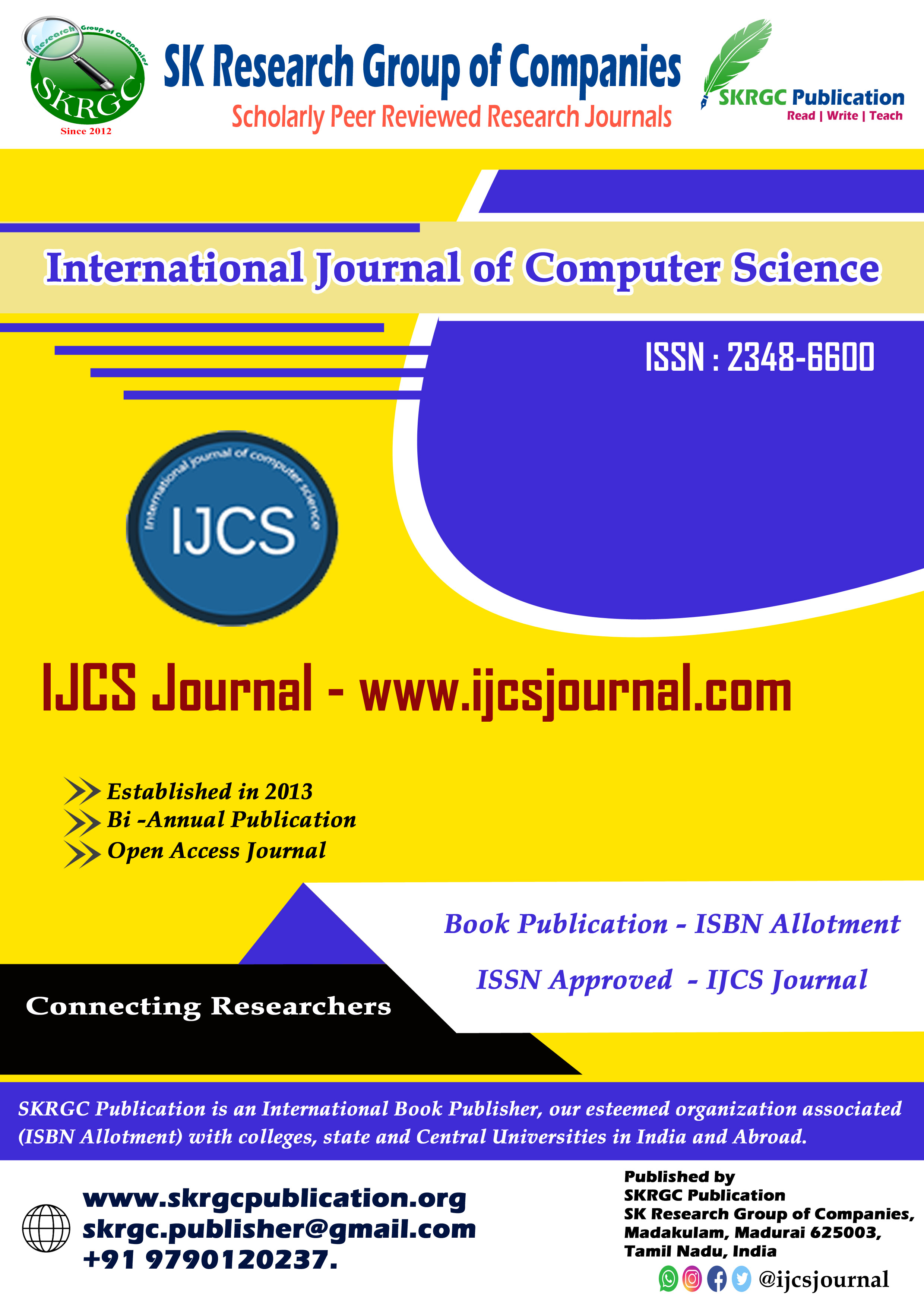Flood Relief Information System
International Journal of Computer Science (IJCS) Published by SK Research Group of Companies (SKRGC).
Download this PDF format
Abstract
The project is a web application that can allow users to track location of cyclone shelters available around them for specific distance in the emergency situations. Communication during disaster time is very crucial for both rescue team and victim. Emergency never comes with prior intimation. The System is intended to function in case of emergencies in society. The emergencies include Fire, Medical Emergencies, accident and External Emergencies (Earthquake, Floods, Storm). Location Coordinates are sending on each request. The system works on the principles of client-Server system, wherein the server responds to the requests of the Clients. The front end of this web application is Web and the back end is MySQL. The chosen shelters will display details such as type of building like cyclone shelter, school, hospital, etc., The locals can also include their shelter details if they are ready to provide for the victims (details to be send to server located in the government premises). The digital coast is organized by categories as states with coastal areas (South India). Each states have the list of cities present and based on the chosen city, it will display user’s current location, the list of cyclone shelters in their cities and its location, number of people it can support, size of the building, its distance from shore and also map view system. This application can be used by news channel reporters in case of tower problem, because news channel reporters have satellite connection and solar power generation kit etc. Admin can sell solar power bank or solar battery or electricity battery.
References
[1] Babak Abedin and Abdul Babar, Institutional vs. Non-institutional Use of social media during Emergency Response: A Case of Twitter in 2014 Australian Bush Fire, Information Systems Frontiers, DOI 10.1007/s10796-017-9789-4.
[2] Nitesh Bharosa, JinKyu Lee and Marijn Janssen (2010), Challenges and Obstacles in Sharing and Coordinating Information during Multi-agency Disaster Response: Propositions from Field Exercises, Information Systems Frontiers, 12 (1), Springer, Pages 49-65.
[3] Jane Fedorowicz and Janis L. Gogan (2010), Reinvention of Interorganizational Systems: A Case Analysis of the Diffusion of a Bio-terror Surveillance System, Information Systems Frontiers, 12 (1), Springer, Pages 81-95.
[4] Dedi Iskandar Inan, Ghassan Beydoun and Simon Opper, Agent-Based Knowledge Analysis Framework in Disaster Management, Information Systems Frontiers, DOI 10.1007/s10796-017-9792-9.
[5] Marijn Janssen, JinKyu Lee and Nitesh Bharosa (2010), Advances in Multi-agency Disaster Management: Key Elements in Disaster Research, Information Systems Frontiers, 12 (1), Springer, Pages 1-7.
[6] Othman, S. H. and G. Beydoun (2011). A Disaster Management Metamodel (DMM) Evaluated in 11th International Workshop on Knowledge Management and Acquisition for Smart Systems and Services. 2PKAW 2010. LNCS (LNAI), vol. 6232, pp. 111-125, Springer.
[7] M. Sakurai, D. Thapa, Building resilience through effective disaster management: an information ecology perspective, Int J Inf Syst Crisis Response Manag, 9 (1) (2017), pp. 11-26.
Keywords
Solar Power, Disaster Management Server, Cyclone Shelters.

